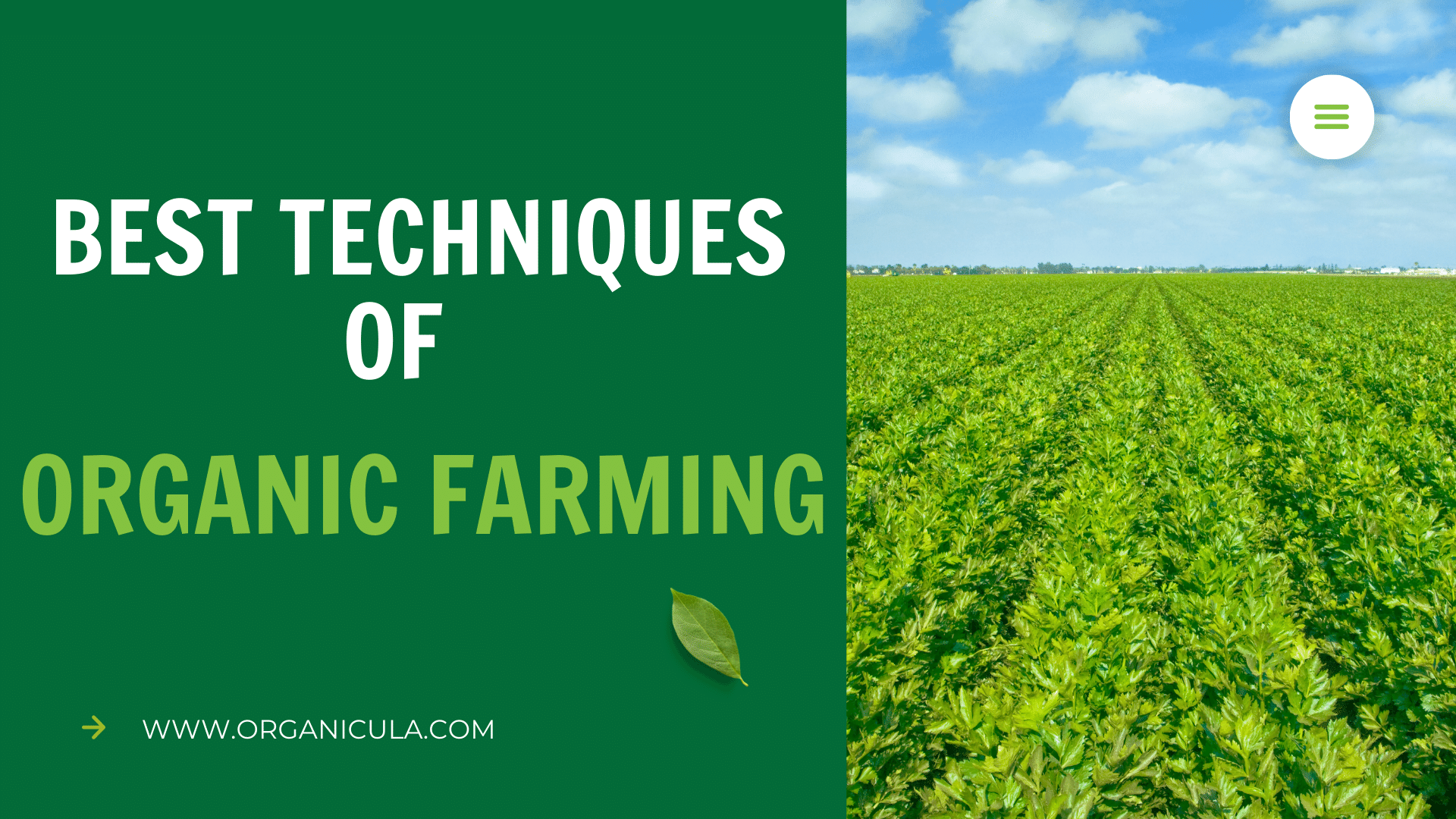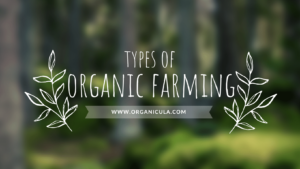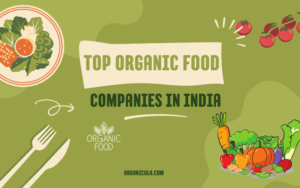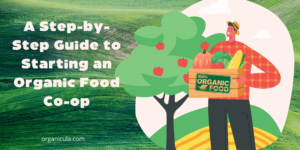Best Techniques of Organic Farming
Organic farming is a type of farming that produce food organically without using any harmful chemicals and pesticides. Organic farming uses many techniques and methods that can enhance soil, improve crop growth and manage pests. So, let’s talk about some methods and techniques used in organic farming.
Cover Cropping
Cover cropping is an organic farming technique that involves planting crops to cover the soil when the primary crops are not growing. Cover crops are often planted into the soil before the next main crop is planted. It can be done between main crops or in fallow fields. They are usually grown between the principal crops and provide several benefits, such as:
- Soil erosion control: Cover crops control erosion by keeping soil in place with their roots and above-ground biomass.
- Soil fertility improvement: Cover crops add organic value to the soil, enhancing soil structure and fertility and decreasing soil compression.
- Weed suppression: Cover crops can repress weed growth by competing for light, water, and nutrients.
- Pest control: Cover crops can also lower pest populations by providing a habitat for helpful insects, lowering the number of pests in the surrounding crops.
- The cover crops can be a mixture of different plants selected for their unique benefits, such as fixing nitrogen, suppressing weeds, improving soil structure, or providing organic matter.
- Cover crops are grown mainly to protect and improve soil health and fertility.
Some examples of cover crops include:
Legumes: Crops such as clovers, beans, and peas. These legumes add nitrogen to the soil.
Grasses: Crops such as cereal rye, wheat, and barley. These grasses help control erosion and improve soil structure.
Brassicas: Crops, such as radish and mustard, can improve soil health by breaking up compaction and suppressing weeds.
Forbs: Crops such as sunflowers and buckwheat add organic matter to the soil and attract beneficial insects.
Crop Rotation
Crop rotation is the method of growing different crops in the same field in a standard order. The order of crops is designed to take benefit of each crop’s characteristics, such as their capability to fix nitrogen, suppress weeds, or enhance soil structure. In addition, crop rotation can help lower the soil’s buildup of pests and diseases and improve soil fertility by providing extra nutrients.
There are many advantages of crop rotation, including the following:
- Soil fertility improvement: Crop rotation can improve soil fertility by rotating crops with different nutrient requirements. For example, a legume crop, such as beans or clover, can add nitrogen to the soil, which is then openly available for the following crops.
- Pest and disease control: Crop rotation can decrease the populations of pests and disorders typical to particular crops by rotating crops that are not concerned by those pests and diseases.
- Soil structure improvement: Crop rotation can enhance soil structure by alternating crops with deep roots and shallow roots, which helps to decrease soil compression.
Examples of crop rotation:
- A 3-year rotation: This applies rotating three different crops in a typical sequence, such as corn, soybeans, and wheat.
- A 4-year rotation: This involves rotating four different crops, such as corn, soybeans, wheat, and alfalfa.
- A legume-cereal rotation: This involves rotating a legume crop, such as beans or clover, with a cereal crop, such as wheat or barley, to enhance soil nitrogen levels.
It is necessary to note that the typical crop rotation system will rely on the climate, soil type, and other local conditions, the crops being grown, and their exact requirements.
Intercropping
Intercropping is an agricultural method of simultaneously growing two or more crops in the same field. Intercropping aims to optimize land use, improve yields, and enhance soil health. Intercropping can also improve the assortment of crops and lower the risk of crop failure due to pests, diseases, or weather.
Some examples of intercropping include:
- Maize and beans: Maize is planted as the main crop, and beans are grown in the spaces between the maize stalks. Beans fix nitrogen in the soil, which benefits the maize, and their foliage provides shade, which reduces weed growth.
- Rice and vegetables: Rice is grown in watered fields, while vegetables such as tomatoes, eggplants, and okra are planted in the spaces between the rice paddies. The vegetable profit from the moisture from the watered rice fields, while the rice profits from the shading supplied by the vegetables.
- Wheat and clover: Wheat is grown as the main crop, while clover is intercropped in the same field. The clover improves nitrogen in the soil, which helps the wheat, and its roots enhance soil structure.
- Corn and soybeans: Corn is grown as the main crop, while soybeans are intercropped between the rows of corn. The soybeans got help from the shading provided by the corn, while the corn benefited from the improved soil fertility supplied by the nitrogen-fixing soybeans.
- Peanut and maize: Peanuts are grown in the ground, while maize is grown above peanuts. The maize supplies shade for the peanuts and reduce moisture loss, and the peanuts supply nitrogen for the maize.
Composting
Composting breaks down organic material, such as food scraps, yard waste, and manure, into a rich soil modification called compost. Composting happens naturally as microorganisms, such as bacteria and fungi, break down the organic material. However, composting can also be boosted by adequately handling the compost pile to optimise the conditions for decomposition.
Composting has several benefits, including reducing waste sent to landfills, enhancing soil health, and lessening the need for chemical fertilisers.
Here are some examples of materials that can be composted:
- Food scraps: vegetable and fruit peels, coffee grounds, eggshells, etc.
- Yard waste: leaves, grass clippings, twigs, and branches.
- Manure: from horses, cows, chickens, rabbits, etc.
- Paper products: shredded paper, cardboard, paper towels, and napkins.
- Sawdust and wood chips: from untreated wood.
- Straw and hay.
It’s critical to note that not all organic materials can be composted. For example, meat, bones, dairy products, and oils should not be added to a compost pile, as they can tempt pests and produce undesirable odours.
There are several techniques for composting:
- Backyard composting: a simple process in which a compost pile is made in a fixed yard area.
- Vermicomposting: a process in which composting is boosted by worms, which break down the organic material.
- Bokashi composting: a process in which food scraps are fermented in an airtight container using a combination of microorganisms.
- Commercial composting: a technique in which large-scale composting units process organic waste for use in agriculture and landscaping.
Composting is a simple and effective way to reduce waste, improve soil health, and reduce the need for chemical fertilizers.
Reduced Tillage
Reduced tillage is an agricultural method that uses the lowest amount of soil disturbance to reduce erosion and increase soil organic matter levels. This method is an alternative to conventional tillage practices that depend on intensive ploughing and other soil-disturbing actions.
The reduced tillage technique involves leaving some crop remains on the soil’s surface and using shallow cultivation techniques, such as chiselling or harrowing, to prevent weeds. It keeps the soil structure intact, decreasing erosion and encouraging healthy soil biota. Also, by keeping crop residue on the surface, reduced tillage allows to build of soil organic matter levels and improves soil fertility over time.
Here are a few examples of reduced tillage methods in agriculture:
- No-Till: No-till is reduced tillage that applies planting crops directly into un-tilled soil without upsetting the soil structure. It is typically accomplished using specialized equipment, such as no-till drills, that can plant seeds through the residue of previous crops. This approach minimizes soil disturbance and erosion and helps to construct soil organic matter levels over time.
- Minimum Tillage: This method involves using shallow techniques, such as chiselling or rotary tillage, to prevent weeds and prepare the soil for planting. It reduces soil disruption compared to conventional tillage but involves some soil disruption to prevent weeds and make a seedbed for planting.
- Zone Tillage: Zone tillage is a reduced technique that involves creating narrow strips of tilled soil, or “zones,” within a field. It permits crops to be planted into untilled soil while also controlling weeds in the tilled strips. This technique reduces soil disturbance compared to conventional tillage and can assist in maintaining or improving soil health over time.
- Conservation Tillage: Conservation tillage is a type of reduced tillage that uses minimal soil disturbance to prevent weeds and ready the soil for planting. This process typically involves using technical equipment, such as vertical tillage tools, to mix crop residue with the top layer of soil to make a seedbed for planting. Conservation tillage lessens soil disturbance than conventional tillage and can help enhance soil health over time.
Each method uses a different level of soil disturbance and is suitable for different types of crops and growing conditions. However, all reduced tillage techniques have the same goal: to maintain or enhance soil health while lowering the amount of soil disturbance needed for crop production.
Agroforestry
Agroforestry is an agricultural method that combines trees with crops and livestock on the same land. This land use scheme has many advantages, including enhanced biodiversity, soil health, and enriched tree and crop yields.
There are different types of agroforestry systems:
- Alley Cropping: Alley cropping includes growing crops in rows between rows of trees, creating an “alley” of vegetation. An example of alley cropping would be growing rows of fast-growing nitrogen-fixing trees, such as Leucaena or Sesbania, between rows of crops like maize or rice. The trees help to enhance soil fertility by adding nitrogen to the soil, and the crops give food and income to the farmer.
- Silvopasture: Silvopasture incorporates forestry and livestock management practices on the same land. Livestock such as cattle or sheep grazes under the trees like oak, pine, or eucalyptus, giving additional food sources and reducing pressure on other fields. This agroforestry approach can help enhance soil health and the growth of trees and livestock. The trees give shelter and feed for the livestock, and the grazing animals help to handle the grasses and enhance the health of the field.
- Forest Farming: Forest farming uses the resources of a forest ecosystem to cultivate non-timber forest products, such as medicinal plants, mushrooms, or ornamental plants like ginseng, goldenseal, or mushrooms. This agroforestry approach can help enhance residents’ livelihoods while preserving biodiversity and enhancing the health of the forest ecosystem.
- Home gardens: A home garden is a model of agroforestry commonly practised in many tropical and subtropical countries. Home gardens combine fruits, vegetables, and trees, such as coconut, mango, and jackfruit. The trees are the source of food and income, while the crops provide food for the family.
Livestock Integration
Livestock integration integrates livestock into other agricultural methods, such as cropping, agroforestry, or conservation. The purpose of livestock integration is to increase the growth and sustainability of these methods by including the usefulness that livestock can deliver, such as fertilizer, weed control, and income from meat, milk, or other products.
Here are a few examples of livestock integration:
- Integrating Livestock into Cropping Systems: An example of integrating livestock into cropping systems would be alternating cattle or sheep through fields of crops like maize or soybeans. The livestock can control weeds, help break up soil compression, and add fertilizer to the fields through their waste.
- Integrating Livestock into Agroforestry Systems: Silvopasture system is an example of integrating livestock where cattle or sheep graze under the shade of trees like oak or eucalyptus. The trees give shelter and feed for cattle or sheep, and the grazing animals help to control the grasses and enhance the health of the field.
- Integrating Livestock into Conservation Programs: An example of integrating livestock into conservation programs would be utilizing livestock, such as goats or sheep, to prevent interfering plant species in sensitive ecosystems like wetlands or prairies. The livestock can help control interfering species while delivering meat or wool products.
Livestock integration can be a valuable means for enhancing the sustainability and productivity of various agricultural methods. By carefully integrating livestock into these methods, farmers can take many benefits that livestock can give while also improving their land.
Natural Pest Management
Natural pest management is a natural method that controls pests in agriculture rather than depending on chemical fertilizers. Natural pest management helps reduce the negative impacts of pesticides on the environment and human health and maintains effective pest control.
Here are a few examples of natural pest management methods:
- Crop rotation involves cultivating different crops in a field in a standard order over several years. It can help decrease pest populations by interrupting the life cycle of pests to specific crops.
- Companion planting: Companion planting includes planting two or more crops together in the same field. It reduces pest populations by attracting helpful insects that feed on pests or making it more difficult for pests to find and attack the crops.
- Biological control: this system uses natural predators, parasites, or pathogens to prevent pests. For example, ladybugs can be used to manage aphids, and parasitic wasps can be used to manage caterpillars.
- Cultural control: Cultural control includes using physical and management practices to lower pest populations. For example, using floating row covers to protect crops from insect pests or hand-picking and killing pests can be helpful cultural control practices.
- Natural insecticides: Natural insecticides are made from natural materials that manage pests. For example, neem oil extracted from the neem tree is helpful against a vast range of pests.
These are a few examples of different natural pest control techniques. But, of course, the exact method used can depend on local conditions and the pests.
In conclusion, these are some commonly used methods in organic farming. Each method and technique is beneficial to the farmer. In addition, these methods can improve soil health and farm profitability.



